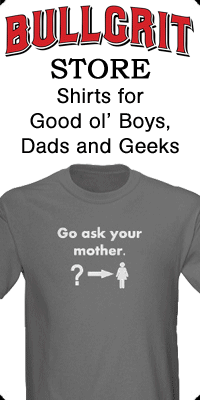D&D Heroes vs. Super Heroes
Many RPG players have compared high-level D&D characters with comic book super heroes. With magic spells or magic items, high-level D&D characters are so far beyond the realm of normal D&D-world characters, they are like Captain America, Superman, and other heroes with super powers. Well, that’s not true. High-level D&D characters are more powerful than even comic book super heroes.
For instance, look at Captain America: he’s basically a 20th-level fighter with a single magic item (an artifact, really). His physical abilities are all within normal human limits, although at the very maximum limits. A 20th-level fighter in D&D is going to have magic items to boost his physical abilities beyond normal limits. He’ll have magic items that allow him to fly, and resist magic and effects, and he’ll have a whole suite of magic weapons, armors, and miscellaneous gear.
Superman? A 20th-level wizard would clean his clock. Even if Superman made every saving throw roll, a high-level wizard has so many options at his command, he can easily catch Supes in a no-save spell. A single 20th-level wizard has more options, and more powerful options than the entire Justice League combined. And that’s before even considering magic equipment.
There is no argument — high-level D&D characters are, indeed, super powered characters. But they were not born with this amazing, super power. They did not get it all at once in some mutation, or freak chemical reaction, or even some magical experiment. A 20th-level D&D character worked up from 1st level, gaining power in small, incremental steps. A 3rd-level D&D character is not super powered compared to a 1st-level character. An 8th-level character is not super powered compared to a 6th-level character. A 13th-level character is not super powered compared to a 10th-level character. A 20th-level character is not super powered compared to an 18th-level character. The power did not come at a big jump. The power increase is relatively slow, gained through many adventures, over many months or years, in game time and real world time.
And this is all a good thing. There’s nothing wrong with playing a super hero-like character in a non-super hero world. If that character was built up from low level, through the normal ways — adventuring, overcoming obstacles, surviving dangers — gaining the super power levels feels natural and smooth.
A comic book super hero character usually starts his or her career with super powers. They are either born with them, or at some point they go from 1st level normal person to 20th level super hero in one jump. But D&D characters usually start their career at 1st-level hero, then work up to 2nd, 3rd, 4th, 5th, 6th, 7th, 8th, 9th, 10th, 11th, 12th, 13th, 14th, 15th, 16th, 17th, 18th, 19th, and a long last, 20th-level hero, through a lot of work.
Comic book super heroes are usually far above all other people in the world, powerwise. You have normal people, and then you have super powered people. There’s a huge gulf between the two, like having 1st-level people and 20th-level people, and no one in between. But in a D&D world, you don’t have 1st-level normal people and then 20th-level super characters. You have a wide array of levels throughout the world. There are 19th, 18th, 17th, 16th, and 15th-level characters as well as 1st, 2nd, 3rd, 4th, and 5th-level characters. Sure, the high-level characters will be fewer, far fewer as the levels rise, but they are there.
Only when you look at the end result in isolation from all the work up to that point does the high-level character seem strangely super powered.
Bullgrit
bullgrit@totalbullgrit.com






 Categories:
Categories: 





